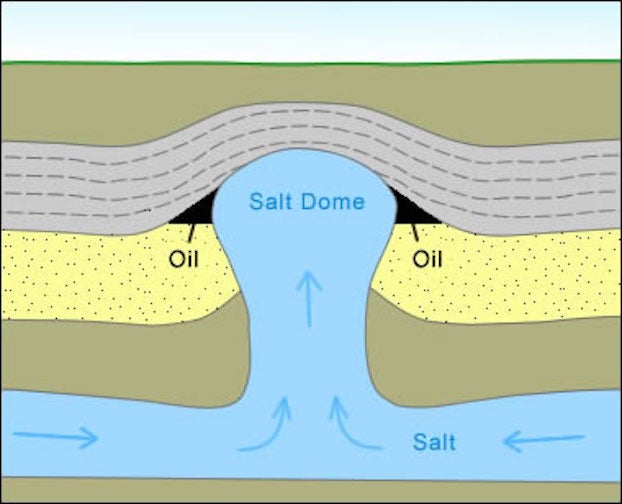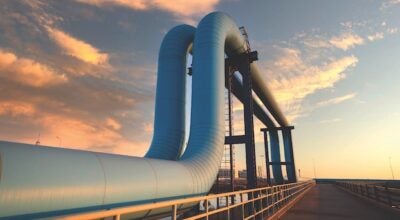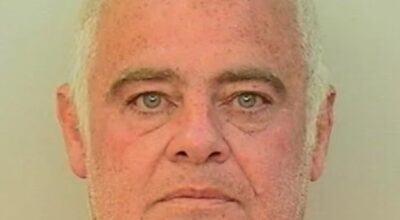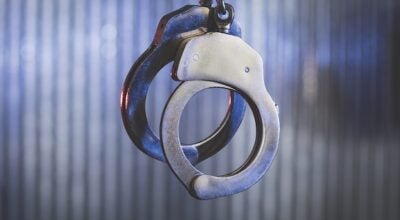Governor declares emergency for Calcasieu Salt Mine
Published 7:22 pm Wednesday, September 20, 2023

- (Photo courtesy of Geology.com)
The offices of Gov. John Bel Edwards and Louisiana Commissioner of Conservation Monique M. Edwards have made emergency declarations in response to concerns about the future stability of a salt cavern on the western side of the Sulphur Mines Salt Dome in Calcasieu Parish.
While no imminent signs of collapse or major surface impact have manifested, Gov. Edwards and Commissioner Edwards (no familial relation) are exercising emergency powers to expedite efforts to bring in experts and resources to understand both what is happening deep underground now and what it might mean for future stability of caverns in the area.
“Our Office of Conservation scientists and inspectors are telling us they are seeing significant early warning signs of a potential subsurface problem on the Sulphur Mines Salt Dome. I want them to have access to every tool available to best understand what is going on in and around these caverns and map out the best response to ensure protection of our people and the environment,” Gov. Edwards said.
Gov. Edwards has issued Executive Order 160, authorizing the director of the Governor’s Office of Homeland Security and Emergency Preparedness (GOHSEP) to take any actions that are appropriate and authorized by law in response to the emergency declaration, and directing all state agencies to cooperate as needed.
The Office of Conservation’s (OOC) primary concern is focused on the brine cavern known as PPG-7, a cavern on the west side of the salt dome, operated by Westlake US 2 LLC. The core issue is that the PPG-7 cavern is unable to maintain a stable pressure without constant pumping of salt water into it and OOC staff have documented a number of sites over the central and western areas of the salt dome where natural gas is bubbling up to the surface in water bodies and near wellheads. In addition, at least one oil seep has been detected and initial subsidence monitoring of the area has revealed a potential accelerating trend of downward movement. The nearby PPG-6 cavern, also operated by Westlake, is also being closely monitored due to its proximity to PPG-7.
“Nothing we are seeing out there indicates we are past the point of no return on the structural integrity of these caverns yet. I am hopeful our established requirements for monitoring and reporting by cavern operators are giving us time to apply the best science available to understand what is developing underground and mitigate future impacts,” Commissioner Edwards said.
Commissioner Edwards said that while many of the issues her staff has investigated could be considered notable but routine problems individually for salt caverns as old as these, the confluence of gas seepage and pressure issues in the PPG-7 cavern were compounded by the recently detected apparent acceleration in subsidence, spurring the decision to declare an emergency.
Commissioner Edwards’ emergency declaration primarily references the threat of subsidence as the reason, noting that the gas bubbling and cavern mechanical integrity concerns are indicators of a potential threat to groundwater in the area, and declares that her office will exercise emergency authority in response to that threat, including the hiring of contractors and various experts to assist in the response.
“We know this situation will bring back memories of Bayou Corne in 2012, but we have some advantages the state did not have then,” Commissioner Edwards said. “We have learned lessons from that and our regulations have evolved, giving us better tools for detecting potential issues earlier and understanding the expertise we need to draw upon. In this case, we have seen some markers that are similar to what was seen then, but nowhere near as severe. We also still have direct access to the caverns we are concerned with.”
OOC’s Injection and Mining Division (IMD) is currently overseeing the response, coordinating as necessary with the GOHSEP, Louisiana Oil Spill Coordinators Office (LOSCO), state Department of Environmental Quality (LDEQ), state Department of Health (LDH) and the U.S. EPA Region 6 office.
The two caverns of concern, PPG-6 and PPG-7, were originally drilled as brine mining wells to supply salt water for petrochemical processes in the mid-1950s, decades prior to the establishment of the state’s Underground Injection Control (UIC) program under the OOC.
In 1979, the U.S. Department of Energy took over the caverns for Strategic Petroleum Reserve (SPR) oil storage, using the caverns as part of the SPR until the mid-1990s when they were transferred back to a private company, PPG Industries. PPG was the forerunner of the company now known as Westlake Chemical. Brine mining was reported as having ended for both PPG-6 and PPG-7 by 2014, after which both caverns have remained in inactive status.
Ongoing monitoring required by OOC regulations detected a pressure anomaly in December 2021 in caverns on Sulphur Mines Salt Dome and follow-up work indicated a focus on PPG-6 and PPG-7, particularly PPG-7, was warranted. Continuing investigation over the course of 2022 turned up issues with PPG-7’s ability to hold pressure and the cavern failed a Mechanical Integrity Test (MIT) in 2022 after having passed a similar MIT in 2021.
As observations of PPG-7’s inability to hold pressure on its own continued, Westlake began pumping brine into the cavern to maintain a minimum pressure. Through late 2022 and 2023, operators and OOC staff observed natural gas bubbling spots and an oil seepage over and around the dome, which in combination with what was seen in subsidence monitoring, led to OOC Gov. Edwards’ emergency declarations.
“At this point, we are monitoring internal pressure of these caverns and other caverns across the salt dome, seismic activity in the area, subsidence above the salt dome and the extent of natural gas bubbling and potential impacts to nearby groundwater,” Commissioner Edwards said. “Next steps include bringing in additional expertise to better understand the potential for structural failure, the impacts of that and what we can do to mitigate or minimize threats to people and the environment.”





